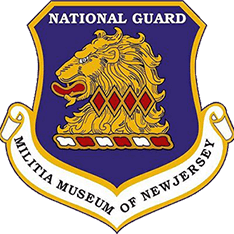CENTER FOR U.S. WAR
VETERANS' ORAL HISTORIES
World War II
Thomas F. Mahoney
World War II Oral History Interview
US Navy, USS Curtiss / USS O’Bannon
Date: January 14, 2002
Interviewer: Carol Fowler
Summarizer: Macartan McCabe
Veterans History Project
Summary

Thomas Mahoney was born and raised in Union County, New Jersey. Prior to World War II, he worked as a farmhand on his aunt’s farm. Mahoney was poor during the Great Depression and fortunate to be living on the farm, where he received food and shelter. In 1940, he decided to join the Navy to get away from his mundane existence. After completing basic training, Mahoney traveled up and down the East Coast on the Seaplane Tender USS Curtiss (AV-4), visiting Trinidad, Panama City, and various Caribbean Islands. He was also able to convince his brother to join the Navy after telling him how good his life was. In the Navy, Mahoney was able to shower, eat three meals a day, and have a roof over his head, things he was not able to do consistently while on the farm.
After six months service on the East Coast, Mahoney’s ship was transferred to the Pacific. The navy had trained him to be an electrician, and he worked on the establishment of bases on Wake Island and Midway. His first taste of action was when the Curtiss encountered a ship with no visible national identifying colors (flags) and fired a warning shot. The ship quickly revealed that it was Peruvian, and both vessels moved on. At the time of the Japanese attack on Pearl Harbor on December 7, 1941, however, the Curtiss was anchored at the port.

On the Sunday morning of December 7, the crew of the Curtiss were dressed in their fancy dress whites for Mass. When the attack began, Mahoney was stationed in the ship’s electrician quarters, where he was unaware of what was going on, until he saw a torpedo sink the USS Utah. He was ordered to go to his battle station, which was with a midship repair crew, where his responsibility was to maintain the valves of the ship. A Japanese bomb crashed into the wooden deck of the Curtiss, showering splinters and igniting fires. The ship was constantly strafed until the Japanese withdrew. Mahoney’s close friend was hit in the stomach by a piece of random shrapnel, which did not penetrate, during the fighting. Mahoney kept it as a souvenir, and still had it at the date of his interview.
They were huddled in a half circle, charcoaled. You touched them, and they fell apart. You carry this stuff with you always. It lives with you forever.”
The Curtiss crew fought for a total of nine hours, resulting in the loss of twenty-nine men killed in action. When the fighting ended, Mahoney remembered looking out into the carnage in the harbor and vowing revenge on the Japanese. He stated that he remembered that amid the chaos, a few US fighters were shot down by Americans mistaking them for Japanese planes. Mahoney thought this was the end of the fighting for him, but it was only the beginning of his experiences in the Pacific War. He would not return to the United States until the war was over. This angered Mahoney, as he believed his youth got robbed from him

Mahoney would go on to participate in Western New Guinea operations and Hollandia Morotai landings. He was transferred to the USS O’Bannon (DD 450) one of the first Fletcher class destroyers, as an electrician in 1943, and then served in Ormoc Bay landings, Luzon operations, Mindoro landings, Lingayen Gulf landings, Bataan-Corregidor landings, other Philippine Island landings, Borneo landing, carrier strikes on Tokyo, Nagoya, Kure, Northern Honshu, and Hokkaido, escorting the USS Missouri, and leading the 3rd Fleet triumphantly into Sagami Wan and Tokyo Bay.
At Okinawa, Mahoney was called to the Captain’s quarters and asked if he wanted to go home. He opted to stay, which is something he thought he would never say up until then. The war took a toll on him, as he had to work in close quarters where the temperatures could rise to 130 degrees. Mahoney was sealed in until the fighting stopped and watched torpedoes underwater. He recalled that this experience caused him to come close to losing his sanity.
Towards the end of the war, Mahoney heard rumors about a secret weapon that could end the conflict in one strike. Despite the rumors, an invasion of Japan was being prepared, and the sky was black with planes bombing Japan. During this time, the American fleet was hit by a typhoon. Fortunately for Mahoney, the first atomic bomb was dropped on the same day the typhoon hit, and the invasion of Japan was canceled. At the time of his interview, he still loved President Truman for ordering the bombs dropped, and felt that Truman should never be criticized for making that decision.

The O’Bannon was one of the US Navy’s most decorated destroyer during World War II, earning seventeen battle stars and a Presidential Unit Citation. Mahoney continued to serve on the O’Bannon until he was discharged in 1946 as an electrician’s mate first class and returned to New Jersey. After the war, he found relaxation in fishing off the Jersey shore, golfing, and exercising. Although he never returned to Pearl Harbor, he was a member of a New Jersey chapter of the Pearl Harbor Survivors Association.
Thomas Mahoney died on June 3, 2013 at the age of 91.
Additional Resources:

